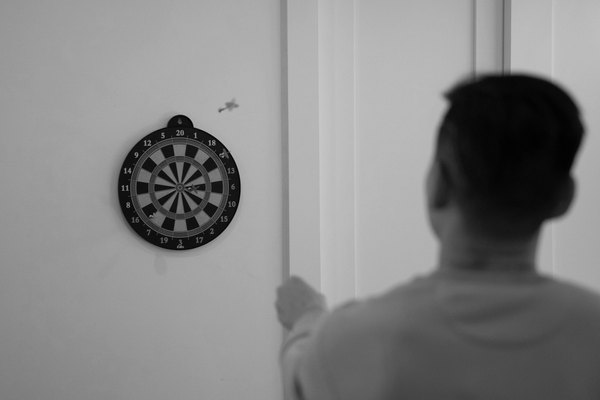Introduction
Procrastination, a common phenomenon that perplexes both procrastinators and non-procrastinators alike, is a complex interplay between the rational decision-maker and the instant gratification monkey in our brains. Delve into the world of procrastination as we dissect the mechanisms behind this behavior and its profound impact on our lives.
The Procrastinator's Dilemma

The Rational Decision-Maker vs. The Instant Gratification Monkey
At the core of the procrastinator's brain, a constant battle is waged between the rational decision-maker and the instant gratification monkey. The rational decision-maker is focused on long-term achievements and planning, while the monkey prefers immediate pleasure, often at the expense of long-term benefits. This struggle can lead to procrastination when the monkey overpowers the rational decision-maker, especially in moments of decision-making.
Unveiling the Brain: MRI studies have shown these dynamics in action, revealing how the instant gratification monkey can dominate decision-making processes, leading to procrastination. The neural activity during these interactions highlights the monkey's influence, particularly in how it can derail plans by prioritizing short-term fun over long-term goals.
The Dark Playground and the Panic Monster
Procrastination often manifests in two scenarios: deadline-driven and long-term. The panic monster awakens only when a deadline is near, propelling the procrastinator into action. Conversely, in the absence of imminent deadlines, the panic monster remains dormant, allowing long-term procrastination to persist. The "dark playground" is where procrastinators spend time when they avoid necessary tasks, filled with activities that are unfulfilling and tinged with guilt and anxiety.
Case Study: Sarah, a writer, found herself in the dark playground often, unable to make progress on her novel due to long-term procrastination. By establishing a daily writing routine and participating in weekly check-ins with a mentor, she managed to complete and publish her work.
Consequences of Long-Term Procrastination

The Invisible Struggle
Long-term procrastination is particularly insidious because it lacks the obvious cues of deadline-driven procrastination. It involves a quiet, ongoing erosion of potential and happiness, with individuals feeling detached from their own lives. This form of procrastination leads to significant regret and unhappiness, which, although profound, are often not as immediately apparent as the consequences of failing to meet a specific deadline.
The Life Calendar
The concept of a life calendar—visualizing one's life in weeks—is a powerful tool for highlighting the finiteness of time. It starkly illustrates how procrastination can consume valuable time, urging individuals to see where they might be allowing the instant gratification monkey to take control. This visual tool can motivate individuals to engage more fully with their long-term aspirations and reclaim their schedules from procrastination.
Overcoming Procrastination

Awareness and Action
To effectively combat procrastination, it's crucial to develop a keen awareness of the triggers and patterns that lead to procrastinative behavior. Understanding when the instant gratification monkey is likely to interfere allows the rational decision-maker to regain control and direct us toward more productive behaviors.
Case Study: Alex, a manager at a tech company, often postponed performance reviews and strategic planning. After implementing structured deadlines and feedback sessions, he improved his productivity and the overall morale and performance of his team.
Setting Priorities
Effective tools like life calendars or goal-setting frameworks can aid in prioritizing tasks and managing time more efficiently. By setting clear goals and breaking tasks into smaller, manageable steps, the temptation to procrastinate can be significantly reduced.
Seeking Support
Building a support network through accountability partners, mentors, or professional help can make a significant difference in overcoming procrastination. Such networks offer not only guidance but also emotional support, helping individuals navigate the challenges of procrastination together.
Embracing a Proactive Future

Embracing Change
By acknowledging procrastination tendencies and taking proactive steps to address them, individuals can pave the way for a more fulfilling and purpose-driven future. Embracing change and committing to personal growth are fundamental in breaking free from the shackles of procrastination.
Seizing the Moment
Every box on the life calendar represents an opportunity to make meaningful choices and pursue our passions. By seizing the present moment and aligning our actions with our long-term aspirations, we can transcend procrastination and lead a life filled with purpose and fulfillment.
As we navigate the intricate dance between rationality and instant gratification, let us strive to overcome procrastination's grip and embark on a journey towards self-realization and success. Remember, the key to unlocking our full potential lies in our ability to outsmart the instant gratification monkey and embrace the path to personal growth and achievement.
Conclusion

Procrastination, with its dual nature of immediate satisfaction and long-term consequences, poses a significant challenge in our quest for productivity and fulfillment. By dissecting the underlying mechanisms of procrastination and implementing strategies to combat its effects, we can chart a course towards a more purposeful and proactive existence. Let us embark on this journey together, transcending procrastination's barriers and embracing a future defined by intentionality and achievement.
Take the First Step: Reflect on your procrastination tendencies and identify areas where you can make positive changes. Share your insights and experiences in the comments below or join the conversation on social media. Together, let's conquer procrastination and unlock our true potential.
